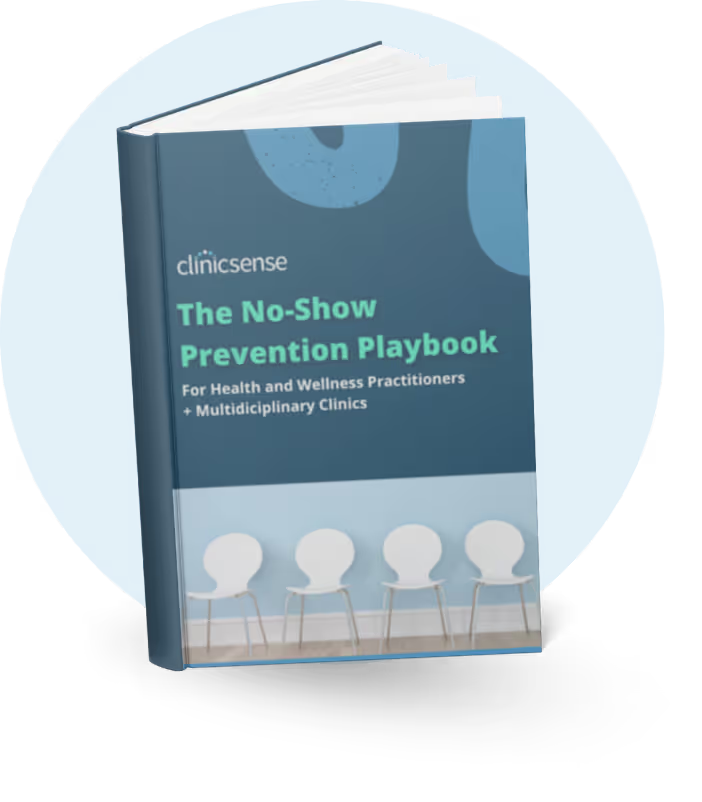Advice From Industry Experts
December 23, 2025

As the year winds down, it’s the perfect time to set the stage for a successful 2026 - yes, even in the middle of your busiest season! Now is when planning matters most, and budgeting is a key step. Cassandra Tyagi, CPA, is back to share their expertise on how to create a budget that works for you. With years of experience helping health professionals understand and manage their finances, Cas offers actionable advice to help you take control of your practice’s future.
TL;DR: Budgeting helps wellness practitioners plan for big expenses, time off, taxes, and growth by reviewing past finances, setting goals, and prioritizing investments. The article outlines a five‑step budgeting process, then highlights the Profit First approach: pay yourself first, then allocate taxes, expenses, and profit to keep your practice sustainable.
Check out the full replay of the lunch & learn below, or keep reading the article for a written breakdown:
Budgeting is essential for managing large expenses, planning time off, estimating taxes, and tracking growth. It helps you save for annual fees or vacations, avoid tax surprises, and measure progress toward goals. A well-maintained budget ensures financial stability and supports your practice's long-term success.
Big expenses like annual dues, renewal fees, or continuing education can sneak up on you. Knowing your monthly expenses lets you plan ahead. Budgeting helps you save in advance, reducing stress and ensuring you're prepared when those big-ticket costs come around.
Time off is essential for your well-being, but it often means unpaid days. Planning a vacation? Estimate the cost and divide it across the months leading up to your break. By saving gradually, you can enjoy time off without the financial stress.
Budgeting helps you plan for tax time. Taxes are based on a blended rate of your annual income. Budgeting your yearly income helps you estimate your tax rate more accurately. By setting aside funds monthly for taxes, you’ll avoid the last-minute scramble and stay financially prepared.
Tracking your sales and progress can be incredibly motivating. Hitting a sales goal—or exceeding it—becomes tangible with a budget. It shows where you're headed and lets you measure success. As your business evolves, adjust your budget to reflect and accommodate growth.

You can create a budget by following the following 5 steps:
Review this year’s bookkeeping month by month to gain a clear picture of your business’s finances. Completing your 2025 records is essential for budgeting 2026. It reveals what you’ve earned, what you’ve spent, and sets a solid foundation for planning ahead.
If you use ClinicSense, take advantage of their reporting tools to review sales reports and identify patterns in client bookings or service popularity. Completing this step gives you valuable insight into what you earned and spent, setting a solid foundation for your budget. Knowing your numbers is the first step to planning a financially successful year.
What do you want to achieve in the year ahead? Envision your business’s growth and evolution. Clear goals guide your budgeting process, helping you allocate resources effectively. Think of your budget as a roadmap to turn your aspirations into actionable, measurable progress.
Take time to review financial and non-financial data, including clinic management reports. These provide insights into your business’s performance and help shape your plan for the future. If you're new to budgeting, seek industry insights or talk to experienced therapists about seasonality and trends to set realistic expectations.
Remember, your first budget won’t be perfect—no budget is. It’s based on estimates and assumptions, and that’s okay. The goal is to create a roadmap, not a flawless forecast, so you can make informed decisions as you grow.
Consider how changes in your business, like new services, product costs, marketing efforts, or staffing, might impact your finances. Whether you’re adding a new modality, raising rates, or hiring staff, recognizing these shifts helps you create a realistic budget that supports your goals and accounts for new expenses or profits.
Identify the investments that will have the greatest impact on your practice’s success. This could include professional development, upgraded equipment, new technology, marketing efforts, or expanding services. Prioritizing essential expenses ensures your budget supports growth while keeping your financial goals on track.
The Profit First method redefines how you manage your cash flow by prioritizing profit and owner compensation. Unlike traditional budgeting, where expenses are subtracted from sales to determine profit (Sales - Expenses = Profit), this method flips the equation: Sales - Profit = Expenses.
The core principle is simple: pay yourself first. Allocate percentages of your income into designated accounts to ensure all essential areas are covered without overspending on operations. For example, your allocations might look like this:
This approach guarantees that you, as the owner, earn a paycheck and maintain a sustainable business. It also ensures that taxes, savings, and essential expenses are managed systematically. By using actual cash flow to allocate funds, the Profit First method helps you stay financially disciplined while growing your practice.
Cas explained how you can avoid common budgeting mistakes with these tips:
.avif)
Optimism is great, but your goals must be achievable. For instance, budgeting for a 50% income increase might seem exciting, but if it means adding 15 more patients a week, ask yourself if that’s sustainable. Focus on realistic, manageable growth that aligns with your capacity and resources.
Unexpected expenses, like equipment repairs or unplanned time off, can derail your finances if you’re unprepared. Allocate funds for an emergency fund—aim for at least three months' net salary. This cushion ensures you’re ready for surprises without added stress.
Your budget isn’t a “set it and forget it” tool. Regularly compare your actual financial performance against your budget. If it feels unattainable, review to identify why and adjust as needed. Consistent monitoring keeps you on track and helps you make informed decisions throughout the year.
While last year’s numbers provide valuable insights, your budget should reflect current goals and circumstances. Clinging to last year’s plan can lead to unrealistic expectations as income, expenses, or business needs evolve. Adapt your budget to stay aligned with your practice’s current reality.
Budgeting only to maintain the status quo can stall your practice's progress. Set aside resources for growth-focused investments like marketing initiatives, technology upgrades, continuing education, and professional development. These strategic investments ensure your practice continues to thrive and expand long-term.
Saving for personal income tax is a crucial part of budgeting. Allocate a portion of your income each month based on your estimated tax rate to avoid a year-end scramble. This ensures you’re prepared to meet your tax obligations and reduces financial stress when payments are due.
Understanding Canada's progressive tax system is crucial for effective budgeting. In 2024, the federal income tax brackets are as follows:
These rates apply to your taxable income after deductions and credits.
Your total tax liability is calculated using a blended rate, meaning different portions of your income are taxed at different rates. To avoid a large tax bill at year-end, set aside a portion of your income regularly to cover these obligations. Regularly reviewing the latest tax brackets and consulting with a tax professional can help you determine the exact amount to save.
Provincial taxes in Canada follow a progressive system similar to federal taxes, but each province sets its own tax brackets and rates. Check with your province to understand what applies to your area and include these rates in your tax planning.
In 2025, self‑employed individuals in Canada contribute 11.9% of their pensionable earnings to CPP, covering both employee and employer portions, up to a maximum of $8,068.20. High earners may pay extra under the CPP enhancement.
When you incorporate your practice, your tax obligations change. Corporations pay both federal and provincial taxes, similar to personal tax. Corporate income typically includes business income, investment income, and capital gains. Understanding these categories is key to effective tax planning for your incorporated practice.
The GST/HST you collect is not your income—it belongs to the government. Your responsibility is to collect, hold, and remit it. The only cost to you is the administrative task of managing these payments, so staying organized is key to compliance. Use ClinicSense sales tax reports to track what you’ve collected.
Start planning for next year by using ClinicSense financial reports to gain valuable insights into your business's performance.


.avif)
.avif)
.avif)


Begin by listing all expected income and fixed/variable expenses. Include rent, supplies, insurance, marketing, and any irregular costs. Set realistic estimates and adjust as you gather real data over time.

Include fixed costs (rent, utilities), variable costs (supplies, marketing), and irregular or seasonal costs (equipment upgrades, license renewals, continuing education). Don’t forget an emergency fund for unexpected expenses.

Review monthly or quarterly. Compare actual income and expenses to projections and adjust as needed, especially when your services, pricing, or overhead change.

A common approach is to set aside a percentage of revenue for taxes, retirement, and emergency funds. Adjust based on your local tax rates, income level, and personal financial goals.




For 14 days